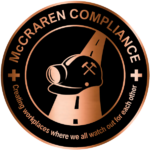
Lost-time injuries and illnesses resulting from “environmental cold” spiked nearly 142% in 2018 – soaring to 290 cases from 120 the previous year, according to the Bureau of Labor Statistics.
Those cases, plus the 280 reported in 2019, are a likely indicator of a lack of employer and worker understanding about the dangers of cold stress.
What are the dangers?
Along with air temperature, wind and moisture can create issues for employees working in the cold. Water, including sweat, can displace body heat 25 times faster than dry air, according to the Canadian Center for Occupational Health and Safety.
Likewise, wind can blow away the body’s protective external layer of heat. This is why wind chill is an important factor to understand. So, for example, when the temperature is 25° F and the wind is blowing 25 mph, the wind chill is 9° F, resulting in more dangerous conditions.
The American Conference of Governmental Industrial Hygienists used air temperature and wind speed to develop three thresholds of cold stress hazards:
Little danger: Freezing of exposed skin within one hour
Danger: Freezing of exposed skin within one minute
Extreme danger: Freezing of exposed skin within 30 seconds
With no wind, the temperature can drop to -20° F and still pose little danger to workers. But if the wind speed reaches 20 mph or more, then the danger threshold moves up to 10° F.
ACGIH also developed a work/warm-up schedule for four-hour shifts (available on OSHA’s website at osha.gov/dts/weather/winter_weather). On this sliding scale, no noticeable wind and an air temperature between -25° and -29° F translates to a maximum work period of 75 minutes. However, if the wind reaches 20 mph or more and the temperature is between -15° and -19° F, the maximum work period is 40 minutes. At -25° F or colder and with a wind speed at the same 20 mph or greater, ACGIH recommends that all non-emergency work stop.
Martin Tirado, CEO of the Snow and Ice Management Association, said a good rule of thumb is a 15-minute break for every hour of work. When the temperature dips below zero, workers should have shorter work periods with a break that’s equal in length (i.e., work for five minutes and warm up for five minutes). Continue reading»
McCraren Compliance assists employers in protecting their workers, starting with a comprehensive Work-site Analysis, Hazard Prevention, Controls, and Safety & Health Training.
Please contact us today at 888-758-4757 to learn how we can provide mine safety training and consulting for your business.


